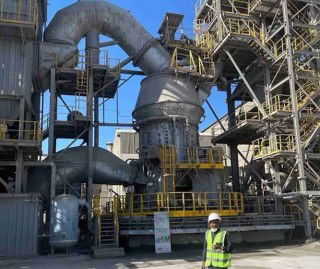This week ICR looks at further tightening of pollution control around the world following Cembureau's reminder that the EU Parliament is expected to vote on the provisional directive to reduce emissions of air pollutants this autumn.
While Europe is aiming to restrict several hazardous pollutants such as SO2 and NOx through the new National Emissions Ceiling Directive, there are clear indications that China is moving in a similar direction. China ratified the COP21 Paris Climate Change agreement in September and is already launching methods to combat CO2 emissions.
The Guangdong experiment
China’s Guangdong province held four planned CO2 auctions in September ahead of a national CO2 trading scheme planned for 2017. The pilot project this September brings a further 431 companies from six sectors, including the cement industry, into its CO2 market, but the national market is expected to include power generation, metallurgical, nonferrous metal, building materials, chemical, aviation, paper and car making. Collating the different independent pilot schemes, such as the Guangdong initiative, into one national system with several industries will be the real challenge.
It is estimated that China’s national CO2 market would regulate 3-4bnt of emissions by 2020, but that is less than half of China’s current total of CO2 emissions, claims Reuters. While the US and China account for 38 per cent of global CO2 emissions, there will be pressure on leading industrial nations to also ratify the Paris Agreement. US Republican presidential candidate, Donald Trump, has already vowed to withdraw from it if elected and the UK has not yet ratified the COP21 agreement. More positive assertions have been issued by India when its Environment Minister, Prakash Javadekar, chairing this summer’s 22nd UN-sponsored Climate change negotiations, said that the ratification process had already begun in his country.
Is a carbon capture and storage solution required?
The Global CCS Institute cited the need for a back-up in exploring carbon capture and storage (CCS) in 2013, but cement was not viewed as the priority for CCS and the power sector, and specifically, coal-fired power plants, were the focus of attention. The CCS development process has resulted in several trials being conducted, including some in the cement sector at the HeidelbergCement Brevik and Lixhe plants, Capitol Aggregate’s San Antonio plant and at Taiwan Cement.
However, current emissions reduction options include less expensive and more readily-implementable measures such as fuel switching, energy efficiency, clinker substitution and recycled raw materials in a circular economy. The European cement association, Cembureau, has been proactive in promoting these. In addition, the Cement Sustainability Initiative (CSI) reports that there is a continuous decline in the cement industry's lowering of CO2 emissions.
The life-cycle approach
Meanwhile, Bernard Mathieu, LafargeHolcim's Head of Sustainable Development spoke this week at Cemtech’s 25th Anniversary Conference and Exhibition in Madrid and highlighted his company’s commitment to The 2030 Plan and reducing CO2 emissions by 40 per cent by 2030 from the 1990 reference year. But the company goes further than that in planning to help its customers prevent 10Mt of CO2 being released every year by producing more sustainable and innovative cement products and solutions to the building trade.

Hima Cement emerges as leading contender to acquire Khayah Cement
Hima Cement , the East African producer owned by Uganda’s Sarrai Group, has emerged as the lead...